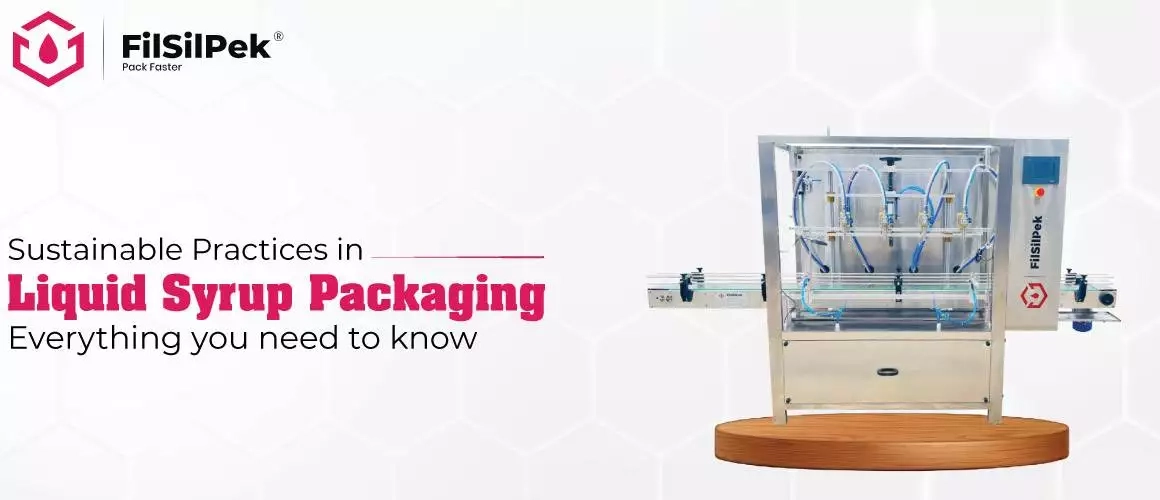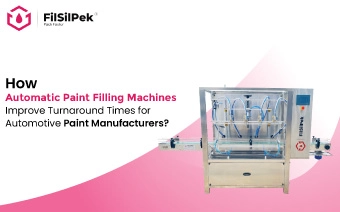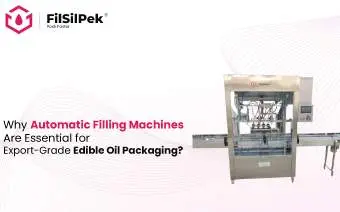Sustainable Practices in Liquid Syrup Packaging - Everything you need to know
Liquid syrup packaging is notoriously complex, requiring durable, leak-proof containers that protect against contamination and preserve product quality. Syrups, given their viscosity and often high sugar content, are prone to crystallization and microbial growth if exposed to air or moisture. This makes airtight seals and protective materials essential for maintaining freshness. However, the widespread reliance on traditional plastics and glass—while effective for preservation and transport—has led to substantial waste, given that many of these materials aren’t recycled after use. This dependency not only strains resources but also results in a significant environmental footprint for the syrup industry.
Recognizing these challenges, companies are increasingly turning to sustainable packaging practices that can meet technical demands while reducing ecological impact. Sustainable packaging now goes beyond simple recyclability, addressing the full lifecycle of packaging materials from production to disposal.
In this article, we’ll explore advanced eco-friendly practices tailored for liquid syrups, such as using innovative bio-based materials, lightweighting to minimize material use, and adopting refill and reuse models.
What is Sustainable Packaging for Liquid Syrup?
Sustainable packaging for liquid syrup involves specialized eco-friendly materials and design strategies aimed at reducing environmental impact while ensuring product integrity. Unlike conventional packaging, which often relies on non-recyclable plastics or energy-intensive glass, sustainable packaging solutions prioritize resource efficiency, waste reduction, and lower carbon emissions throughout the entire lifecycle—starting from raw material sourcing and extending to end-of-life disposal or recycling.
For liquid syrups, sustainable packaging must meet stringent standards for leak prevention, product preservation, and durability, given the high viscosity and potential for crystallization in these products. This often requires the use of advanced materials, such as recyclable PET plastics, compostable bioplastics derived from renewable resources, or lighter-weight, recyclable glass designed to reduce transportation emissions.
Sustainable packaging designs also often incorporate features like thin-walled containers to reduce material usage, refillable bottle options that enable consumers to reuse containers, or molded shapes that optimize storage and transportation efficiency. These innovations allow syrup manufacturers to maintain quality while aligning with environmental goals, offering practical solutions for a more sustainable supply chain in the syrup industry.
Importance of Sustainable Packaging in Liquid Syrup Manufacturing
Sustainable packaging is essential in the liquid syrup industry, where traditional materials like plastic and glass contribute significantly to waste and environmental degradation. The high demand for durable, leak-proof containers has historically driven the use of non-recyclable options that are not easily disposed of. However, as environmental concerns continue to rise, the shift to sustainable packaging offers a practical solution that reduces waste, lowers production costs, and appeals to increasingly eco-conscious consumers. Implementing eco-friendly packaging not only addresses the industry’s environmental impact but also aligns with evolving regulations and consumer expectations for more sustainable products.
- Reduces reliance on single-use plastics
- Lowers energy consumption during manufacturing
- Encourages recycling and responsible disposal
- Meets growing regulatory sustainability demands
- Boosts brand image among eco-conscious consumers
- Decreases transportation costs with lightweight designs
- Enhances product longevity with sustainable materials
- Supports a circular economy through reusable options
- Ensures compliance with global environmental standards
Key Sustainable Materials for Liquid Syrup Packaging
Choosing the right materials is the foundation of sustainable packaging. Here are some materials being increasingly used:
a. Recyclable Plastics
Recyclable plastics like PET (Polyethylene Terephthalate) and HDPE (High-Density Polyethylene) have lower environmental impact compared to traditional single-use plastics. PET bottles, for example, are widely recyclable and can be reused in various forms, reducing the need for virgin plastic production.
b. Glass
Glass is one of the most recyclable materials available, with a nearly infinite recyclability rate without losing purity or quality. Glass containers also provide an appealing, premium look for liquid syrups, though they are heavier and can be costly to transport.
c. Bio-based Plastics
These are derived from renewable sources like corn starch, sugarcane, or potato starch. PLA (Polylactic Acid), for instance, is a plant-based plastic that is biodegradable under certain conditions, offering an eco-friendlier alternative to petroleum-based plastics. However, bio-plastics must be managed properly in waste streams to ensure they decompose efficiently.
d. Aluminum
While not as common for liquid syrups, aluminum can be an option for specialized syrup products. It is lightweight, infinitely recyclable, and highly resistant to corrosion, making it a long-lasting, sustainable choice in some packaging contexts.
Design Innovations for Reduced Material Usage
Innovative design can significantly reduce the amount of packaging material required. Here are some approaches:
a. Lightweighting
By reducing the thickness of plastic or glass containers, manufacturers can use less material while maintaining product integrity. This process, known as lightweighting, lowers transportation costs and reduces greenhouse gas emissions from production.
b. Refill and Reuse Models
Refillable syrup containers encourage consumers to reuse packaging, significantly decreasing waste. Some companies are experimenting with refill stations where customers can refill containers, promoting a circular economy.
c. Smart Packaging Shapes
Packaging shapes that optimize space and reduce empty volume help in efficient transportation. For instance, stackable designs make shipping and storage more streamlined, reducing the environmental impact of logistics.
Eco-Friendly Packaging Processes and Technologies
Modern technology plays a pivotal role in sustainable packaging:
a. Green Manufacturing Techniques
Utilizing renewable energy sources in production, like solar or wind power, helps to reduce carbon emissions. Additionally, manufacturers are investing in energy-efficient machinery and recycling waste materials within production cycles.
b. Reduced Ink Usage and Biodegradable Labels
Eco-friendly labels made from biodegradable materials or paper minimize plastic waste. Furthermore, soy-based or water-based inks are safer for the environment and easier to recycle compared to conventional inks.
c. Digital Printing for Customization
Digital printing minimizes waste compared to traditional printing methods, allowing smaller batches and reduced overproduction. It also enables companies to print only what’s needed, minimizing stockpiles of unused packaging materials.
Challenges and Considerations in Sustainable Syrup Packaging
While sustainable practices are becoming more mainstream, there are still hurdles in making packaging for liquid syrups truly eco-friendly:
a. Cost Implications
Sustainable materials and processes can be more expensive than traditional options, especially during the transition phase. Balancing cost with environmental benefits remains a key challenge for many companies.
b. Regulatory Compliance
Regulations around food-grade packaging, particularly for liquid syrups, can limit the use of some sustainable materials. For example, certain biodegradable plastics may not yet meet food safety standards in all regions.
c. Product Integrity
Some eco-friendly materials may not provide the same level of protection or shelf life as traditional plastics, which is crucial for syrup products. Ensuring that the packaging maintains product quality without compromise is vital for consumer satisfaction.
Future Trends in Liquid Syrup Manufacturing and Its Sustainable Packaging
- Integration of automatic liquid syrup manufacturing and packaging machines to streamline production and reduce material waste.
- Use of AI-powered systems in automatic machines to optimize packaging efficiency and minimize energy consumption.
- Development of automated, closed-loop systems that recycle and reuse packaging materials during the production process.
- Automatic machines designed to handle sustainable materials like bioplastics, ensuring compatibility with eco-friendly packaging.
- Incorporation of real-time data analytics in automated systems to monitor and reduce packaging material usage.
- Rise of automated bulk syrup packaging lines to encourage refillable packaging and reduce single-use containers.
- Use of robotic arms in automatic packaging machines to enhance precision in sustainable packaging design.
- Adoption of automated quality control systems to ensure that sustainable packaging meets required standards.
- Implementation of automated packaging solutions that use minimal ink and eco-friendly labeling technologies.
- Shift towards automated machines that support advanced biodegradable materials and faster recycling processes in packaging.
Conclusion
Adopting sustainable packaging is crucial for the future of liquid syrup manufacturing. Innovative, eco-friendly solutions and automated packaging technologies not only reduce waste but also meet growing consumer demand for sustainability.
Interested in transforming your packaging? Contact us at [email protected] and let’s explore how we can help you make a meaningful change.
How Automatic Paint Filling Machines Improve Turnaround Times for Automotive Paint Manufacturers?
Meeting production deadlines is one of the biggest challenges for automotive..
How Do Automatic Sharbat Filling Machines Ensure Long Shelf Life Through Vacuum Sealing?
The beverage industry consistently pushes for innovations that enhance..
Why Automatic Filling Machines Are Essential for Export-Grade Edible Oil Packaging?
Packaging for edible oil destined for export involves meeting accurate quality..



